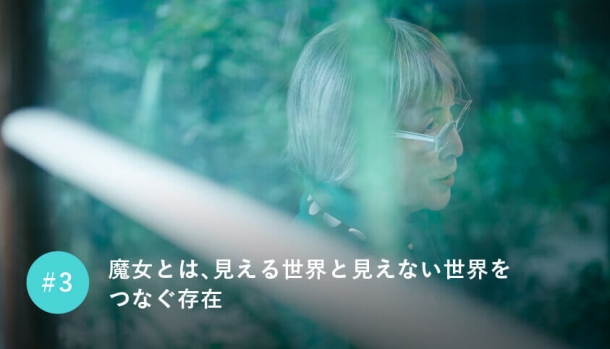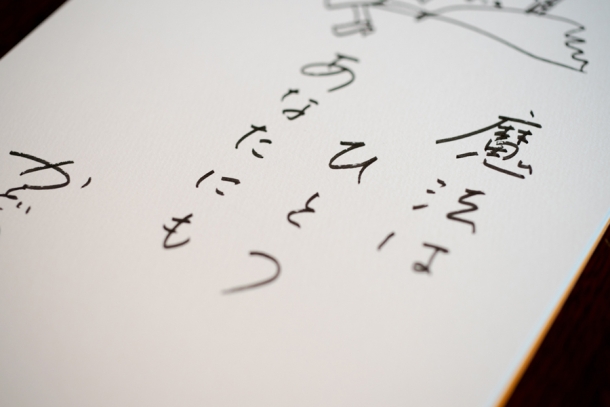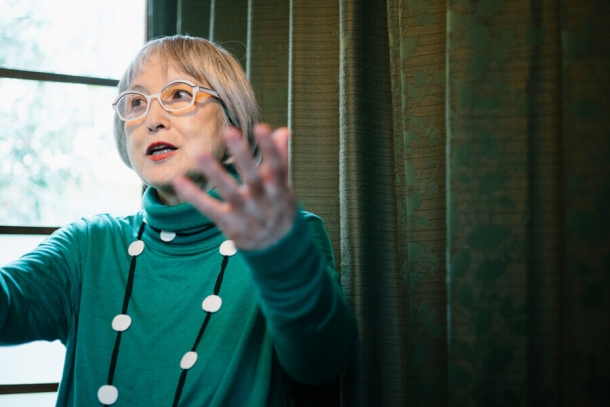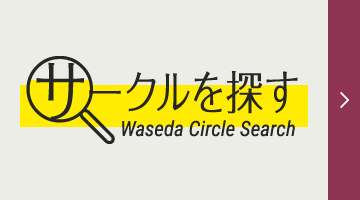
#3 Witches are Beings who Connect the Seen to the Unseen
Q. I think another allure of Kiki’s Delivery Service is the difference between typical portrayals of witches in fantasy, and European fairy tales, and that of Kiki. Witches have generally been portrayed as old and mean antagonists.
Kadono: That’s the general image of witches in Christian contexts. Originally, witches were people well versed in herbal medicines who would cure diseases and serve as midwives. In contrast to Christianity, which is monotheistic, witches believe in animism, or the belief that all things in nature possess a spiritual essence. Perhaps it’s true that they were incompatible with Christian societies. Witches have often been used as political scapegoats, which has led to many tragedies throughout history. Joan of Arc, for example, was burned at the stake for alleged witchcraft.
Q. That’s terrible.
Kadono: Despite the fact that they’re not even malevolent beings. The witch who appears in the Grimm’s Fairy Tales lives in the woods and cherishes the power of nature. When spring comes, she safeguards the
trees’ power to produce seeds and imbues herself with this power in order to protect her family.

Q. It seems we should call them “shamanesses” instead of “witches.”
Kadono: The word “majo” (witch) is relatively new to the Japanese language. The word was created between the end of the Edo period and the Meiji period, during which time many foreign texts were translated into Japanese. In German, the word for witch is “hexe,” which is said to have originated from the compound word for “hag” (hedge) and “zussa” (woman). Therefore, it’s a bit strange that translators decided on “majo” (a word written using the kanji for “evil spirit” and “woman”).
Q. What is “hedge woman” supposed to mean?
Kadono: It’s said that witches sit on top of hedges and can see two worlds, the seen and unseen. They connect these two worlds. That’s why in Germany there is a festival in which a broom is turned upside down and flown in the air over a bonfire. Witches are responsible for the transition from winter to spring. In olden times, towns had castle walls, and it got very dark at night. Outside the castle walls were wolves and other dangers. The area surrounded by castle walls were lit, but outside it was pitch black. On top of these walls were witches. But the power of darkness also beckons the fruits of spring. The witches knew that human life would be in danger if they turned their back to the darkness and only paid heed to what was inside the castle walls. In other words, witches had the ability to perceive the unseen world and its power. Back then, people were wary of the power of the unseen world. But now we’re only preoccupied with what’s perceivable. We’re constantly trying to turn our observations into numbers and graphs, saying such and such has “increased” or “decreased” from the previous year.

Q. In the first volume of Kiki’s Delivery Service, there’s an excerpt explaining that the magic of past witches is disappearing. Kiki’s mother, Kokiri, explains that this is because there are no more pitch-black nights or moments of silence; that magic is disappearing because everyone is trying to perceive the unseen.
Kadono: Yes. I once talked about Christmas to children at the Kamakura Museum of Literature. I asked the children: “Japan has something similar to a Christmas tree. What is it?” One child answered “kadomatsu” (a New Year’s pine decoration), which is correct. Both Christmas trees and kadomatsu are meant to ward off misfortune and bring blessings. Despite being thousands of kilometers apart, without computers, these cultures gave birth to similar forms of faith.
Q. Hearing you speak about this makes me feel like I’m talking to a witch. In a way, the act of writing stories is a way to connect the seen and unseen.
Kadono: Of course. The importance Kokiri places on darkness is the source of creativity. There is a rich world therein, and that’s what writing stories is all about.
Q. So you’re saying you need creativity in order to access that rich world.
Kadono: I always say that “creativity” and “curiosity” are sides of the same coin. A sense of adventure is also important. But now, even if you want to be curious, you’re already prescribed something. You may be able to choose, but you can no longer reach out and grab it for yourself. I think this has a negative effect on creativity. With that said, people have the inherent ability to create things from nothing. When we want to drink something, we think about a container from which to drink. We can drink from our hands, or from a leaf, but because we want to bring water to sick children, for example, we create a proper container. Because we want to truly appreciate our beverage, we go as far as to create crystal glasses. Creativity comes from hope. This is the only magical power that exists, and everyone possesses it. (continued in part two)



